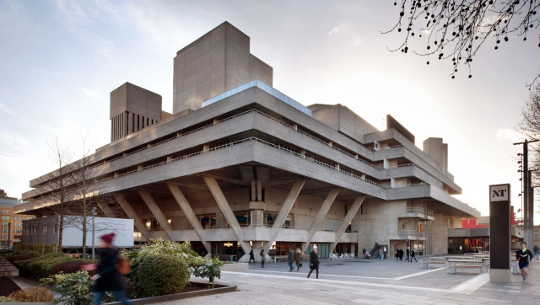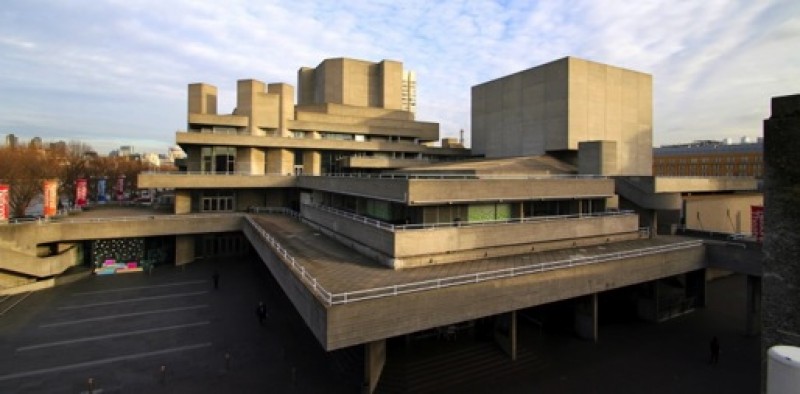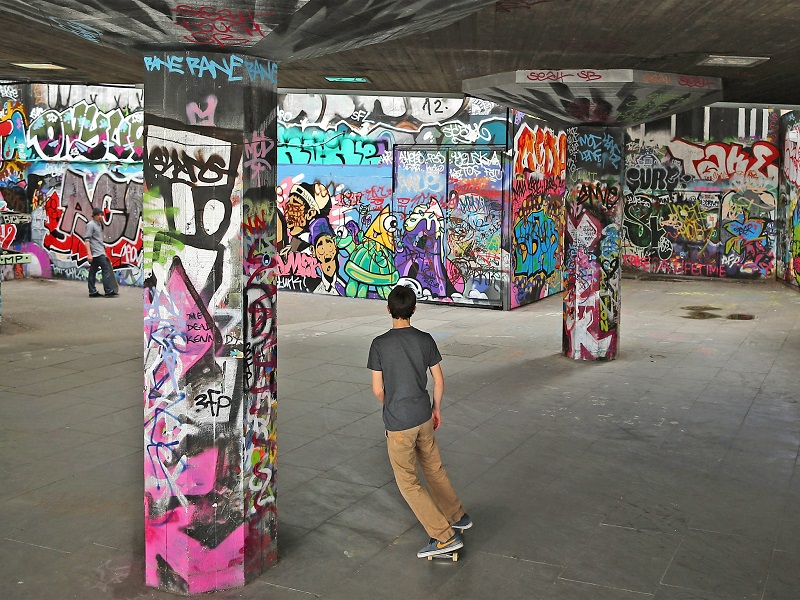National Theatre
Designed by Denys Lasdun and completed in 1976, the National Theatre is one of London's best-known Brutalist buildings. It is also one of the most divisive, described by Prince Charles as like "a nuclear power station".
Standing on the South Bank of the Thames, the concrete building is formed by two fly towers rising from layered horizontal terraces cascading to river level. The design was based on Lasdun's ideas for 'architecture as urban landscape.'
The vast structure accommodates three theatres, the largest of which is capable of seating 1,160 people, as well as restaurants, bars, foyers, workshops and so on.
Lasdun was appointed as architect on the project in 1963, and although he had no prior experience in theatre design, he persuaded the board of directors and others to let him realise his singular vision.
He described the early design process as being evolutionary in nature, shaped through consultations. His intention was for the strata of the building – with interconnected walkways, split levels and circular stairwells - to merge with the South Bank, making it unclear where the theatre begins and ends.
The construction work was carried out by Sir Robert McAlpine. The rough-cast concrete surface of the theatre’s interior and exterior retains the imprints of the timber planks used as formwork. Lasdun said; "Concrete is a very intractable material, but it can be a beautiful material if it is used in the way its own nature intends it to be used... It is a sort of sculpture that you can only do with reinforced concrete, but you need to work to a certain scale... It is not a cosy little material."
In 1994, just 18 years after the building was completed and opened to the public,it was granted Grade II listing status. Despite this, it has remained a divisive addition to London’s architecture, being revered and derided in equal measure.
However, some opinions have evolved with time. Most notably, with regard to the skateboarders who adopted the terraces and undercrofts as a graffiti-strewn skate park. Often cited as evidence of the theatre’s failed architecture, in 2014-15 it was saved from redevelopment after a successful and high-profile campaign promoted it as being ‘one of the great spaces of London.
[edit] Find out more
[edit] Related articles on Designing Buildings Wiki
Featured articles and news
Latest Build UK Building Safety Regime explainer published
Key elements in one short, now updated document.
UKGBC launch the UK Climate Resilience Roadmap
First guidance of its kind on direct climate impacts for the built environment and how it can adapt.
CLC Health, Safety and Wellbeing Strategy 2025
Launched by the Minister for Industry to look at fatalities on site, improving mental health and other issues.
One of the most impressive Victorian architects. Book review.
Common Assessment Standard now with building safety
New CAS update now includes mandatory building safety questions.
RTPI leader to become new CIOB Chief Executive Officer
Dr Victoria Hills MRTPI, FICE to take over after Caroline Gumble’s departure.
Social and affordable housing, a long term plan for delivery
The “Delivering a Decade of Renewal for Social and Affordable Housing” strategy sets out future path.
A change to adoptive architecture
Effects of global weather warming on architectural detailing, material choice and human interaction.
The proposed publicly owned and backed subsidiary of Homes England, to facilitate new homes.
How big is the problem and what can we do to mitigate the effects?
Overheating guidance and tools for building designers
A number of cool guides to help with the heat.
The UK's Modern Industrial Strategy: A 10 year plan
Previous consultation criticism, current key elements and general support with some persisting reservations.
Building Safety Regulator reforms
New roles, new staff and a new fast track service pave the way for a single construction regulator.
Architectural Technologist CPDs and Communications
CIAT CPD… and how you can do it!
Cooling centres and cool spaces
Managing extreme heat in cities by directing the public to places for heat stress relief and water sources.
Winter gardens: A brief history and warm variations
Extending the season with glass in different forms and terms.
Restoring Great Yarmouth's Winter Gardens
Transforming one of the least sustainable constructions imaginable.

























